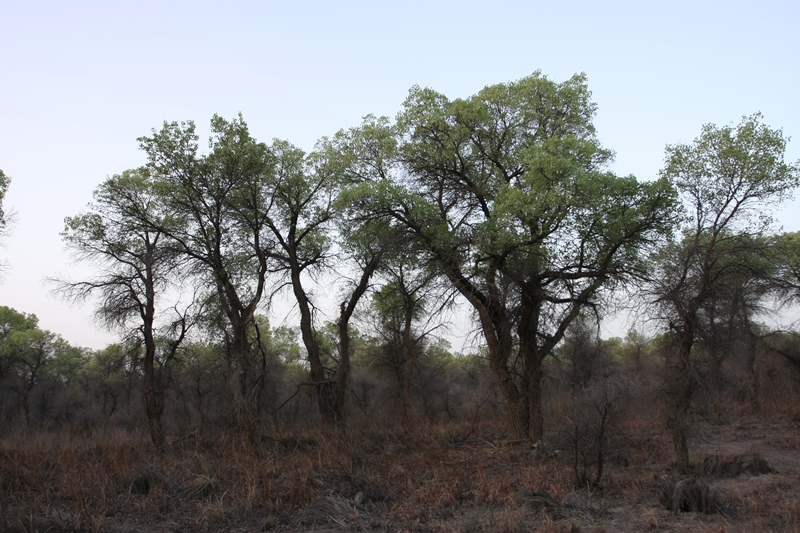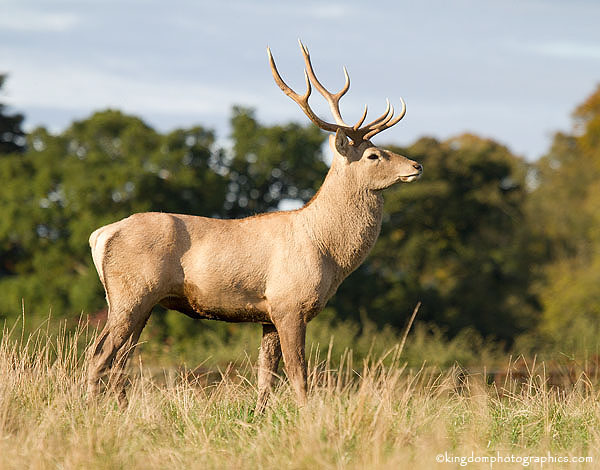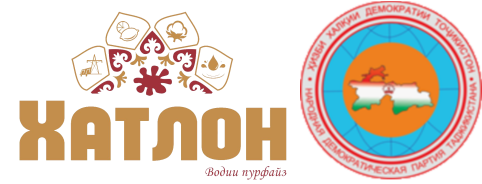
«Tigrovaya Balka»: our Tajik jungle

80 years ago, on June 27, 1936, a special expedition began work in the south of Tajikistan, which is to determine the boundaries of the first reserve in the republic. According to its results, on November 4, 1938, by the decree of the People’s Commissariat of Agriculture of the Tajik SSR, the Tigrovaya Balka nature reserve was established. The history, sights and legends associated with the reserve are in our material.

To visit the real jungle, you do not have to go to the tropics. Maybe not everyone knows that there is a jungle in Tajikistan. Yes, don’t be surprised — just two hundred kilometers from Dushanbe. This is 50 thousand hectares of the Tigrovaya Balka nature reserve, a unique natural zone, where the invaluable gene pool of animals and plants of Central Asia has been preserved for 80 years. Until the middle of the last century, Turanian tigers lived in Tigrovaya Balka, to which the reserve owes its name. As the area of tugai forests decreased, the range of tigers’ habitat decreased. The last tiger was seen here in 1954.
Tugai When you drive up to the central entrance to the reserve, do not be surprised by the deserted territory. It is worth, waddling on bumps, to drive quite a bit along a barely noticeable narrow road, as a picture resembling a savanna opens in front of you. Trees and bushes are scattered across the grassy plain. It looks like you are on a safari in Africa. It seemed that now giraffes would come out or a herd of striped zebras would run. The landscape will gradually change, rare low trees will turn into a dense, impenetrable forest. These are the tugays, the so-called Tajik jungle!

Previously, tugai were widespread in the river basins of Central Asia, especially in the south, on the banks of the Amu Darya. To date, most of the territory occupied in the past by tugai vegetation has been developed for cotton plantations. Tugai survived only here, in the lower reaches of the Vakhsh River, and even those that stretch in a narrow strip along the Amu Darya River along the Tajik-Afghan border. Nowhere in the world can you find such a large area of riparian-floodplain landscape as here. For comparison: reserves in Turkmenistan and Uzbekistan have an area of two to five thousand hectares, while ours — fifty thousand hectares!
Tarzanka
If you go through the tugai territory to the Panj River, you can see a place with an unexpected, strange name for these places — Tarzanka. When asked why this place is called so unusual, local huntsmen say that in Soviet times a Russian guy spent his entire adult life in this «jungle», who was nicknamed Tarzan in honor of the hero of the film of the same name, which was very popular at that time. Nobody knows where he came from here, who his parents are. Here he died. The gamekeepers look after his grave.
Tourists often come to «Balka», but no one stays here for the night, because the management of the reserve does not allow. According to the local leadership, even the huntsmen are not safe here, let alone the tourists, because wild boars and hyenas walk here at night. During the day, if they are not disturbed, they do not leave their lair. But when darkness falls — this is their time, the time of the hunt. There are also many snakes here. Five years ago, a 4-meter snake was seen here, which was nicknamed the local anaconda.
From the fauna, an unusual tree grows here — the ash-leaved poplar. If you pluck a leaf from a tree and write on it with a pen, the inscription will remain as if it were on paper. And if you try to do this on a sheet of an ordinary poplar, it will tear and the inscription will not be visible at all.
There is also the so-called Royal Dacha in Tigrovaya Balka. This is a hunting lodge in the town of Polvon-Tugai. It is said that in 1963 the king of Afghanistan, Zohir Shah, came here to hunt. By his arrival, by order of the government, a dacha was erected, where he rested only once. But the name remained, and now from time to time, the distinguished guests come here, including the president of the country and the Arab sheikhs.

In the reserve «Tigrovaya Balka» there are over 450 species of flowering plants, 600 species of invertebrates and 200 species of vertebrates.
Nature reserve or reserve?
Why was the reserve established here? In 1932, a complex expedition headed by Academician E.N. Pavlovsky. Biological scientists, members of the expedition, were the first to propose to create a nature reserve in the lower reaches of the Vakhsh to protect tugai and desert zones. In 1936, a special expedition was created, which was to determine the protected area, its borders. Based on the results of the survey, a government decree was adopted to establish the Tigrovaya Balka nature reserve. Thanks to this, we have, as it were, a standard for the wildlife of Central Asia. This reserve made it possible not only to preserve nature in its original form, but also to carry out research work for several decades. Scientific conferences were held here, scientists defended dissertations, wrote reports, monographs, articles. Thanks to their efforts, the Tigrovaya Balka Reserve became known far beyond the region.

It should be noted that the preserve is different from the reserve. A preserve is a broader concept than a reserve. Usually, preserves are created on the basis of nature reserves or zakazniks, but in addition to the function of preserving landscapes, ecosystems, genetic species, they have several other functions: promoting environmental education, training personnel in the field of environmental protection, conducting scientific research and monitoring. Typically, such preserves are assigned the status of a biosphere reserve. It has long been raised the question of giving the Tigrovaya Balka nature reserve a biosphere status, which will put it in a row with the most famous protected areas in the world, and will give a new impetus to the development of environmental research in Tajikistan. Scientists believe that «Tigrovaya Balka» is the last largest preserve on the planet of unique communities of tugai flora and fauna.
Out of 250 species of unique animals living in Tigrovaya Balka, dozens are included in the International Red Book and the Red Book of Tajikistan. These are: Bukhara deer, gazelle, Bukhara mountain sheep (urial), Central Asian otter, Indian porcupine, striped hyena, jungle cat, gray monitor lizard, Central Asian cobra, gyurza, sand efa … In addition, badgers, wild boars, hares live on the territory of the reserve. tolai, steppe cats, foxes, jackals, wolves. Of the birds, a unique subspecies of the pheasant is protected — the Tajik black and gold, the beauty bustard and the desert partridge. On the territory of the reserve there is a pheasantry, where Tajik pheasants and mountain partridges — partridges — are bred in captivity.

Tugai forests (tugai) are a specific mini-ecosystem that arises along the uninterrupted banks of rivers flowing in temperate or subtropical deserts. Where humid areas are significant, riparian forests turn into impenetrable jungles, reminiscent of mangrove forests. It is a kind of biological oasis

In winter, a lot of waterfowl and near-water game, including white and black storks, cormorants, geese, swans, mallard ducks, coots, stop at the “Balka” reservoirs. Reptiles include gyurza, efa, cobra, monitor lizard, etc.
The most valuable species of ungulates is the Bukhara deer, or Hangul. In tugai «Tigrovaya Balka» there are about 170 of them. Every year in May, deer shed their antlers, and an expensive medicine, pantocrine, is made from them. Losing antlers is not scary for a deer — they grow quickly. Depending on the age, the number of branches on the horns increases. The main livestock of deer is kept in the south of the protected area — in the vicinity of the Blue Backwater, Lake Khalkakul and Pionerskie Lakes. By the way, there used to be 15 lakes here, but due to soil salinity, four of them dried up. There is a predatory snakehead fish that feeds on fry of local fish species. According to the specialists of the State Institution of Specially Protected Natural Territories, this type of aggressive predatory fish was accidentally brought to Central Asia from China in 1964, together with grass carp fry. There are 20 species of fish in local water bodies. The most common is carp; some specimens sometimes weigh up to eight kilograms. Common in lakes and catfish. Its weight, according to experts, reaches 200 kg!
Piri jangal
Various stories and legends about «Balka» are surprising. Locals believe that at the bend of the Pyanj River, where it merges with the Amu Darya, fish of monstrous size live. They say that somehow, in front of the shepherd, she knocked down a cow that had come to drink with her tail and dragged her into the river. It is strongly advised here not to use perfume: the river monster, the Tajik version of the Loch Ness monster, is said to be sensitive to odors.

In general, people here are very superstitious. Local residents say that you need to come to Tigrovaya Balka with a pure soul and good intentions — then you will meet a forest beast.

And they also say that the spirit of the reserve lives in «Balka» — «piri dzhangal», which is why a person is always haunted by the feeling that someone invisible is watching his actions. They say that not everyone can “feel” it. It can do harm, so you need to be especially careful in dealing with local flora and fauna.
More details: https://asiaplustj.info/news/tajikistan/society/20160628/tigrovaya-balka-nashi-tadzhikskie-dzhungli
Добавить комментарий Отменить ответ
Для отправки комментария вам необходимо авторизоваться.
Ҷустуҷӯ
Хабарҳои охирин
- Program of the International Tourism Forum and Exhibition «Welcome to Ancient Khatlon» 20.02.2024
- ФОРУМ ВА НАМОИШГОҲИ БАЙНАЛМИЛАЛИИ САЙЁҲИИ МАРҲАБО БА ХАТЛОНИ БОСТОН TOURISM FORUM AND EXHIBITION WELCOME TO ANCIENT KHATLON 20.02.2024
- Натиҷагирии фаъолияти Кумитаи рушди сайёҳӣ дар соли 2023 ва вазифаҳо барои соли 2024 09.01.2024
- Achievements of the tourism sector of the Khatlon region 18.12.2023
- Мақбараи Мавлоно Қутбиддини Нишопурӣ/Мавзолей Мавлоно Кутбиддина Нишопури/Mausoleum of Mavlono Qutbuddin Nishopuri 04.12.2023
Хазина
- Февраль 2024 (2)
- Январь 2024 (1)
- Декабрь 2023 (2)
- Ноябрь 2023 (5)
- Октябрь 2023 (9)
- Сентябрь 2023 (7)
- Август 2023 (2)
- Июль 2023 (13)
- Май 2023 (5)
- Апрель 2023 (1)
- Март 2023 (30)
- Февраль 2023 (21)
- Январь 2023 (16)
- Декабрь 2022 (8)
- Ноябрь 2022 (7)
- Август 2022 (9)
- Июль 2022 (4)
- Апрель 2021 (11)
- Март 2021 (8)
- Июль 2020 (4)
- Июнь 2020 (6)
- Апрель 2020 (2)
- Март 2020 (2)
- Февраль 2020 (2)
- Январь 2020 (2)
- Октябрь 2019 (3)
- Июль 2019 (3)
- Июнь 2019 (6)
- Май 2019 (3)

1 Comment
buy cialis online https://graph.org/Understand-COVID-19-And-Know-The-Tricks-To-Avoid-It-From-Spreading—Medical-Services-02-21
Fine info. Regards!